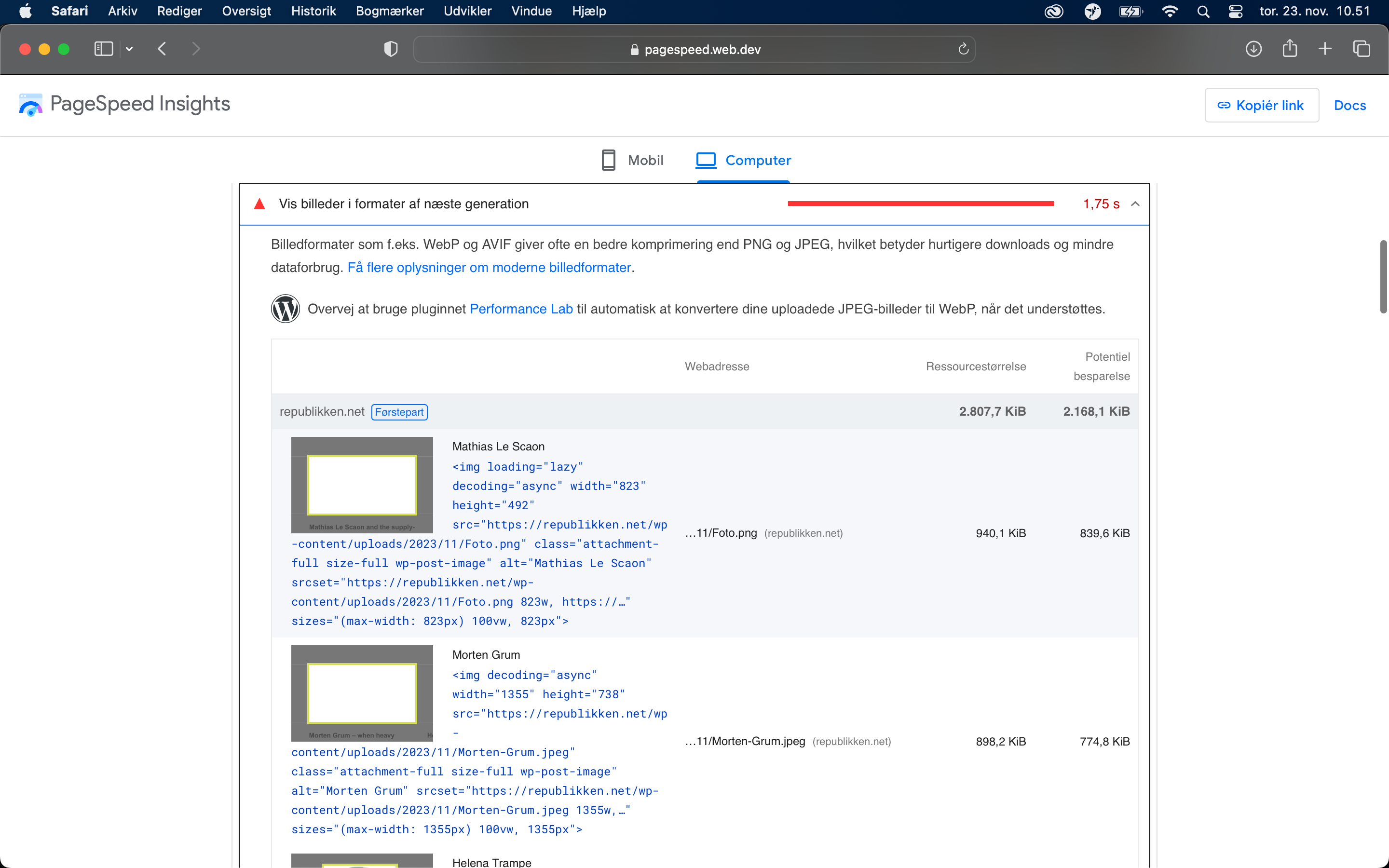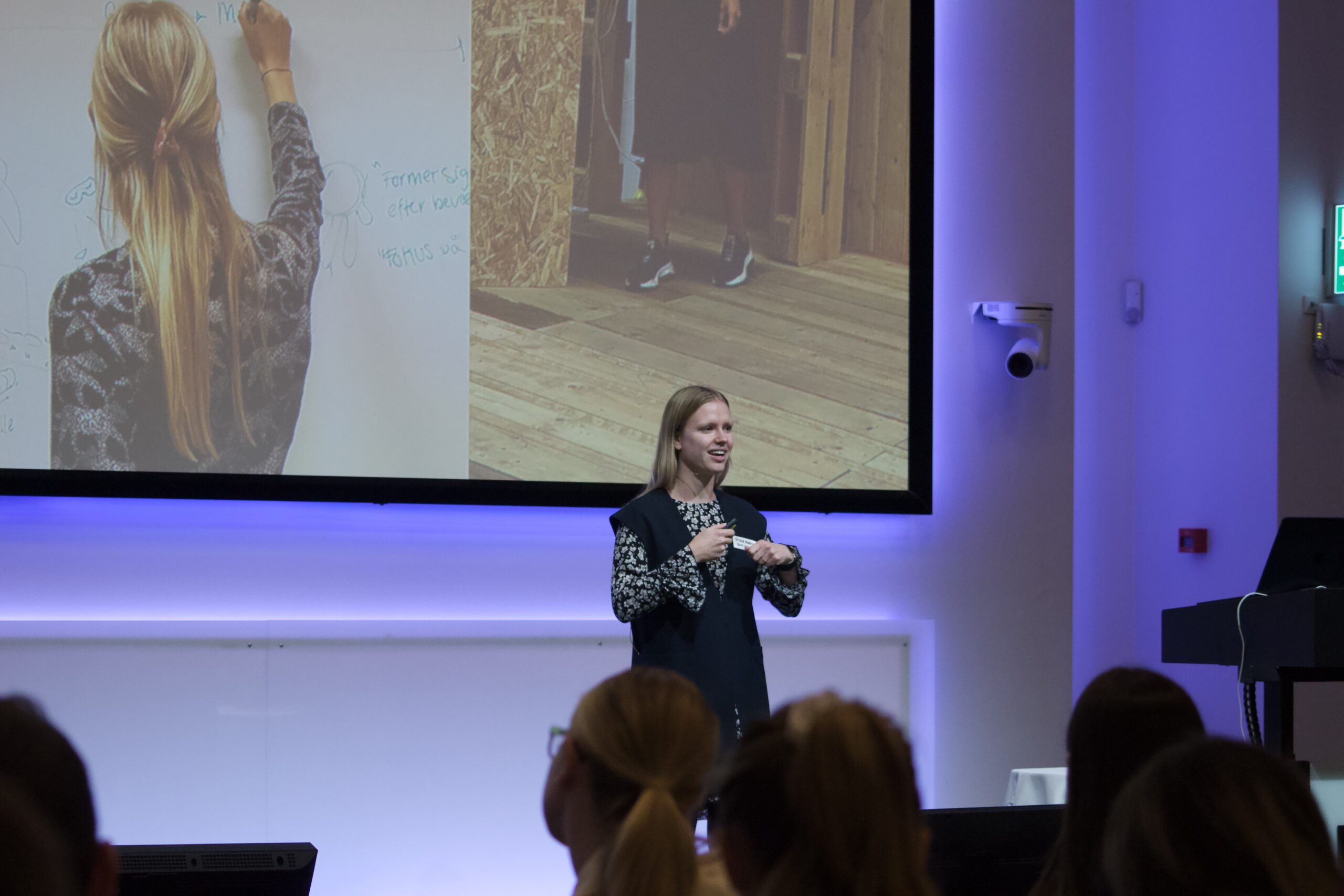You may think the internet is up in the clouds.
What clouds we don’t really know, but surely there are clouds for coding websites, for Instagram, for Facebook and so on. Right?
There definitely was a cloud full of rain on the morning of this Thursday’s Community Breakfast. However, it didn’t seem to keep members from fighting wind and water to meet new Republikken Flex desk member, Stine Ramsing. Digital designer, Sustainable UX expert and SUX ambassador – and the key to knowing where the internet actually gets stored.
And it’s as far from the clouds as it gets. It’s right here on Earth in huge Co2 emitting data centers that use tremendous amounts of energy for running the servers and cooling them down – in fact it makes up 6.2% of the global power supply. In other words: Digital is also physical. AND energy emits CO2.
Numbers from 2021 show that the use of internet emits 3.7 % of the Global Co2 which is more than the aviation industry. And since AI has had a serious momentum within the last couple of years, who knows how that number looks today?
Christiano Ronaldo and the clicks
Don’t worry, despite emitting CO2, Republikken.net hasn’t directed you to some football site just because you went for coffee. Football player Christiano Ronaldo plays a tangible part in understanding the impact scrolling social media and (randomly) clicking on videos, pictures and links.
Let’s break it down. A study into the environmental impact of social media has revealed that a single Instagram post from Ronaldo to his 240 million followers consumes the energy equivalent of powering 10 British households for one year.
Now, we cannot hold anything against Ronaldo. Or all other influencers with thousands of followers for that matter. For all we know they may know just as little about the impact using the internet has on the Ozone layer as most of the members that had come to listen to firstmover Stine Ramsing.
An increasing demand for Stine Ramsing’s knowledge
As a digital designer, Stine Ramsing knows first hand how coding all the sites that we mere mortals take for granted is a big sinner. And not least the immense paradox that lies in the media’s hunt for online clicks.
A dream scenario would be if everyone would just limit their scrolling and clicking but we kinda know that that doesn’t happen overnight. The responsibility cannot solely be placed on the user.
As a SUX ambassador Stine is invited to talk about sustainable UX at conferences, workshops, companies and events different events. And she experiences an increasing demand for her knowledge within this emerging field.
And no longer just withing digital design and UX but for all stakeholders and users of the internet.
The interesting part is that just as the concept of sustainable UX is a complete eyeopener to the greater part of Republikken members at this Community Breakfast, Stine more or less got involved by chance too.
She was in a workshop at a UX conference called UX Copenhagen back in 2021, and the topic was the UN sustainable development goals and digital design.
And the idea for the SUX network came alive.
However, Stine didn’t get involved until a year later when she connected with the founder at the same UX conference. And that’s when Sine Ramsing’s career took a turn towards saving our planet!
“Half a year later he reached out because they needed a speaker at a design leadership group meeting in aarhus – and he thought that I could be a great candidate – I had never done it before, but of course went for it! And from then on I have just been more and more involved.”
So what is Stine Ramsing’s advice?
Website Energy Consumption and Color Choices
The energy consumption of a website is influenced by various factors, including server efficiency and the complexity of web design. For instance, websites with energy-efficient coding and fewer resource-intensive features tend to consume less energy. Color choices can also play a role, as bright and dynamic color schemes may require more energy to display than simpler, energy-efficient designs.
A first step could ttherefore be behind the scenes with sustainable UX design aiming to minimize the carbon footprint while maintaining a seamless user experience.
But how do you tell if a website has a high energy consumption? And what colors are less energy consuming?
According to Stine Ramsing bright colors and particularly blue are the worst. The darker colors the better and websites with videos that are not necessary. One advice is to use animation instead, an image or just a colored area with text.
And simple things like compressing images can make a difference.
We decided to test Republikken.net and were absolutely blown away!
Just by changing the size of 2 pictures we reduced the loading time 1,75 sec. to 0,52 sec.
Standing alone it’s a drop in the ocean but doing this onward, it will make a difference. In other words – and Stine Ramsing’s too – even the smallest steps count.


EU Regulations: Pushing for a Greener Internet
Recognizing the environmental impact of the internet, the European Union has taken steps to regulate and reduce carbon emissions from the digital sector. The EU’s Digital Services Act (DSA) and Digital Markets Act (DMA) aim to ensure that online services and platforms operate responsibly and sustainably. Companies will be required to report on their carbon emissions and take measures to reduce them. These regulations mark a significant step toward a greener and more sustainable digital landscape.
This obviously puts a big responsibility on companies to have specific regulations and goals to live up to.
According to Stine Ramsing that is another one of the more important steps.
What the goals are going to be she doesn’t exactly know but it could be e.g. that a website cannot emit more than one gram of Co2 per day.
We must say that despite what we have learned about Co2 emission and energy consuming websites it is still hard to imagine what a number like that exactly means. But once Sustainable UX has become an everyday part of our lives, we’re sure it’ll make more sense.
And thank god we have Stine in the house to enlighten us along the way! We are so fortunate.
Not just because of her knowledge about Sustainable UX and digital design but also because of her approach to Social sustainability in design.
Social Sustainability
As if Stine didn’t have enough information about environment and planet-saving to juggle, she’s also very engaged. in Social Sustainability in UX design.
We live in a modern world with more or less equality between genders and races but the internet doesn’t exactly reflect that. Yet.
The aim is to ensuring that digital platforms are inclusive, accessible, and user-friendly for people of all backgrounds and abilities.
Well Stine, we believe in YOUR abilities and are so impressed with your knowledge and relentless work towards making this world a more environmentally and socially friendly place to live!
Stine spoke for 35 minutes on this Thursday morning, and while she was bombarded with questions we all forgot about the rain outside.
There’s no doubt that she made just as big an impact on the listeners this rainy morning as the internet on the Co2 emission. So much that one co-member called her the next Elon Musk 🙂
Amen to that!
What Consumers Can Do
- Choose Eco-Friendly Services: Opt for internet services and apps that prioritize sustainability in their operations.
- Limit Data Usage: Avoid unnecessary data consumption, such as streaming in high definition when it’s not needed.
- Use Energy-Efficient Devices: Use energy-efficient devices and regularly update them to more eco-friendly options.
- Educate Yourself: Stay informed about the environmental impact of your digital habits and make conscious choices.
What Companies Can Do
- Optimize Data Centers: Invest in energy-efficient data centers and server cooling technologies.
- Implement Sustainable Design: Embrace Sustainable UX design principles to reduce the energy consumption of websites and apps.
- Report Emissions: Comply with EU regulations by accurately reporting carbon emissions and working toward reduction goals.
- Offer Eco-Friendly Options: Provide users with options to reduce their carbon footprint, such as lower-resolution streaming or energy-saving modes.
Stine Ramsing has a Flex Desk in Republikken coworking
Calculate the carbon emission of your website here: Website Carbon Calculator

